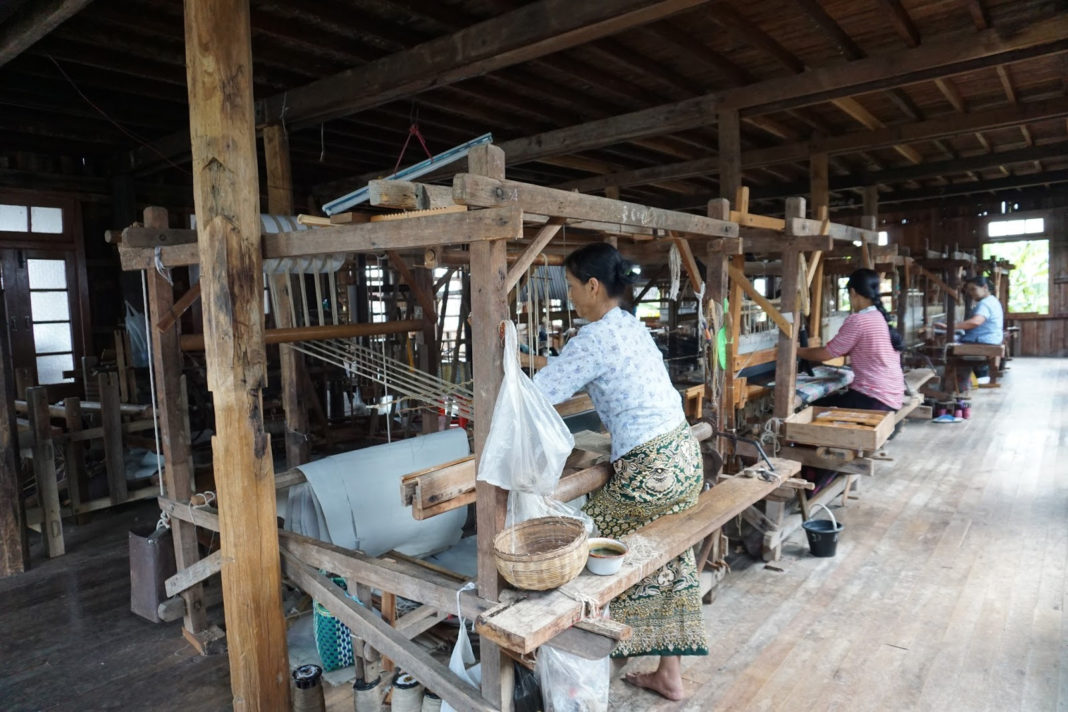
Lotus silk originated in Myanmar (Burma). The fabric was invented in a village named KyaingKan (Chaing Kham) around the year 1900. The first products made from lotus silk were robes offered to monks, created by Sa Oo.

The process of producing lotus silk in Inpawkhon Village is meticulous and entirely handmade. The main steps include:
- Harvesting lotus stems: Lotus grows in deeper water provides longer stem, more threads, and more sustainable.

Lotus is taken directly from the pond. (Source: IRRAWADDY - Extracting lotus threads: Artisans, with merely their skillful hands, pull the threads, passing them through a water-soaked board, stretching and twisting them together.

- Weaving the fabric: The extracted threads are then placed in a large bowl and wound onto a large spindle.

Source: Emily Lush - Dyeing the fabric: This process requires great skill and meticulousness to extract the threads.

Averagely, a small scarf needs 4.000 lotus stems, a big one requires 40.000, and a robe takes 220.000 stems with 6-10 days to complete.
Products from Lotus Silk
In Inpawkhon Village, there are dozens of different products from lotus silk. These include various types of scarves, ties, clothes, longyi. Holding a silk scarf in your hand, you can feel the smoothness, softness of the thread, and especially the purity that no other type of thread can match.

Inpawkhon Village with its traditional lotus silk weaving has created a unique culture of Myanmar. Products from lotus silk not only show sophistication but also carry deep cultural significance, contributing to the uniqueness and style of the local people.














